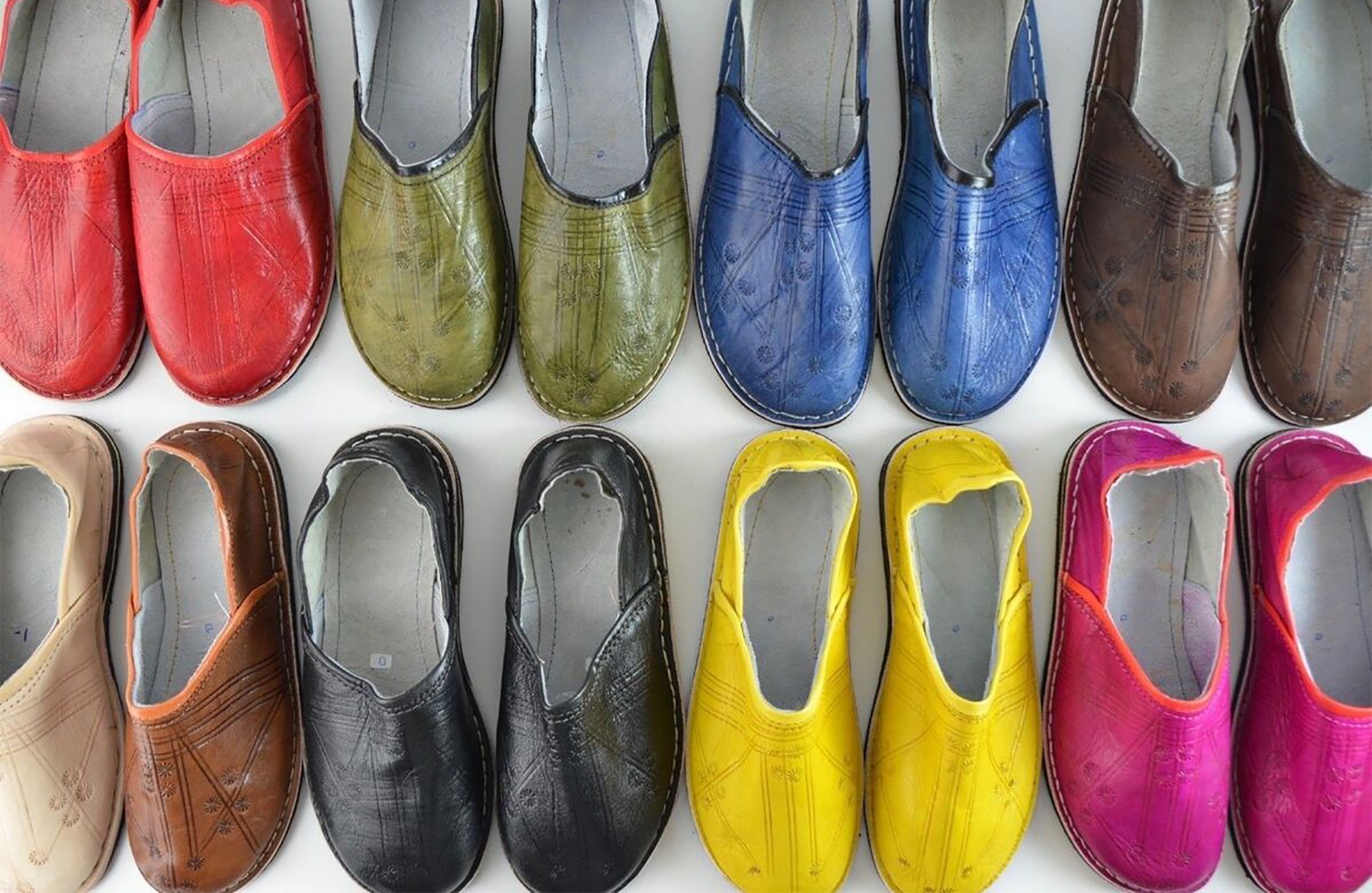The balgha is a traditional sandal of Moroccan origin, made of leather and often accompanies other traditional Moroccan clothing. The balgha is often single-colored (white, yellow, black, or sometimes red). Its design is simple, and even if it is embroidered, it is only lightly. There are two types of Moroccan language, either its introduction is sharp (Fassian language) or it is curved and thus it is Amazigh (Amazigh language).
Cultural dimension
The balgha is considered the most important and oldest item worn on the feet in Morocco, as it has also maintained its appearance and interest in it has increased even more. It is the shoe that many people also prefer, young and old, as it also has many colors, some materials, and decorative arts. The embroideries and colors of the balgha vary from One region in Morocco to another, and it is also multiple:
– Ordinary balgha or fassi: a smooth, soft shoe, made of leather or plastic, with a slightly tapered shape and a grouped front. It is a type that is widespread among many Moroccans and the general public.
– Haidha, or in the language of Tafraout: It is the thinnest type, as it can be worn instead of any shoe, and it ensures maintenance of the foot as it has a back that raises like a shoe and helps the wearer to run and control his speed through its soft and leather bottom. It can be worn in summer and winter, and it has beautiful, modern artistic forms. Its usual color is yellow, and it is sewn with a red ribbon, and as its use progresses, the color tends to brown.
These shoes are worn by men (Bulgha) and worn by women (Sharbil), but they differ in appearance, as those for women are characterized by trimmings and drawing of tree leaves on them, while those for men are characterized by the absence of trimmings except for some dots in green and red, which are few in number, 5 to 7.



